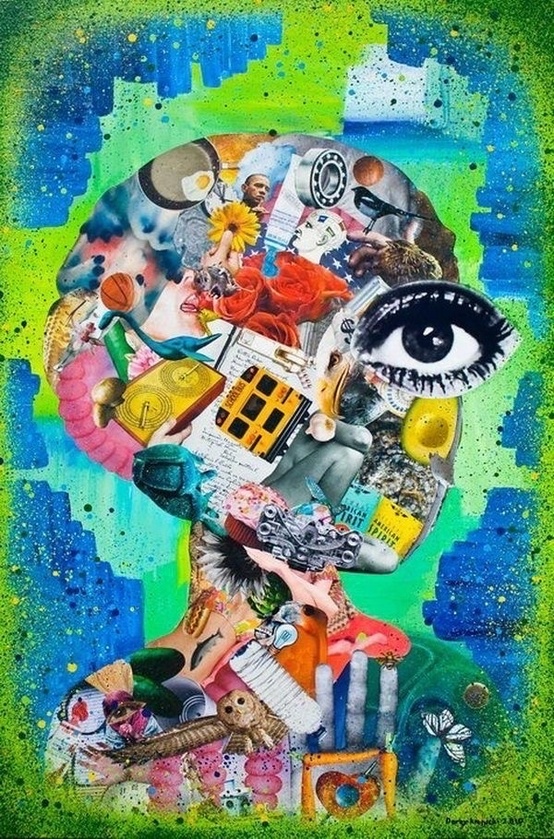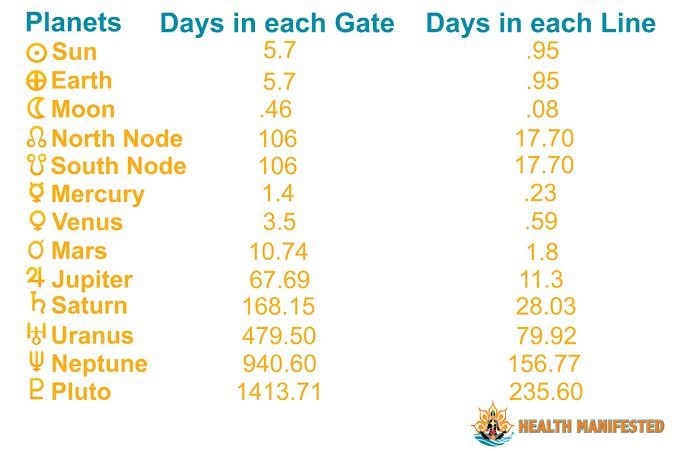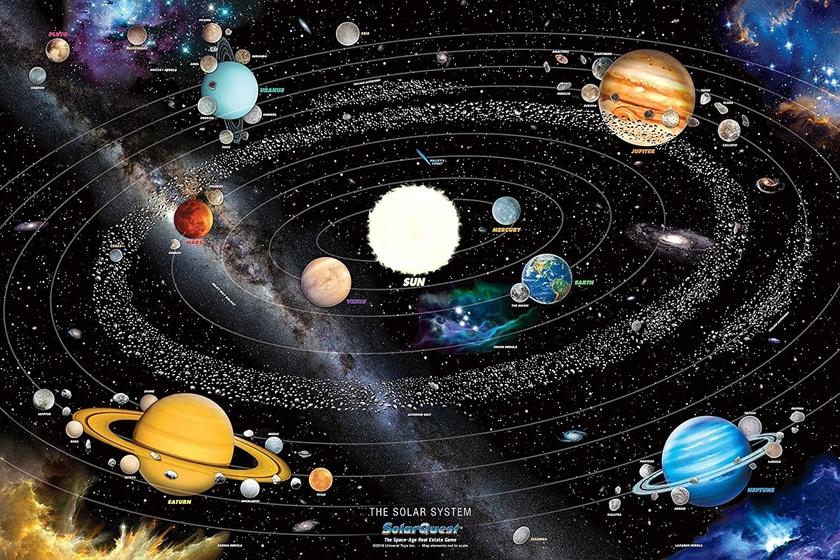Shared by Oleksander Vasin -
Inner vision
"The 4th Tone for me is one of those aspects that carry with it quite a story and its own mysteries.
Think about the language here, we’re talking about inner vision. It’s one of the things to see about what inner vision is all about. It’s not about seeing, it’s about reconstructing data. It makes it very odd in the way it operates.
In other words, think about abstract seeing, you’re watching the experiential. In that abstract seeing, in fact, you’re not really seeing very much while you’re participating in it. As a matter of fact, your focus—it really wouldn’t be a focus—you would simply have a very narrow existential spectrum in terms of your seeing. Yet, the real capacity of the 4th Tone is not about being alert in the sense of being left, being 3rd Tone and connected to splenic survival, but not being alert at all, as a matter of fact. How can I phrase this? What the 4th Tone does is it selects image bits, image segments, visual segments from any experience and it’s the visual segments that it stores.
Now, the visual segments are sort of like writing a sentence without conjunctions or anything in between. It takes out things, and it takes out things that are filler—the thing between this and that. It takes them out. Because it takes them out, when it’s taking anything in, it is only taking in the components and there are things left out.
For example, you have the problems of the translation of the Qumran Scrolls, the Dead Sea Scrolls, and the dilemma was very simple. The ancient Aramaic languages all used power points. That is, you can still see that in some modern languages like German or French where you have these power points that change the way in which a word is pronounced.
If you don’t know what the points are, or if you don’t know where the points go, it’s like you have the letters G and D but you don’t know whether it’s God or gad or gid or good or whatever the case may be. So this is the way in which the 4th Tone designs our mind to take in information to reach cognition. Remember, the goal is to reach cognition. It’s not like this is a handicap or a problem, it’s only a problem when you relate it to the not-self and the way in which the not-self mind operates.
But in terms of Design it’s a really interesting design. In other words, the 4th Tone designs us to visually only take in certain things from any experience. It just does. Not only that, when we take it in, then we go through this process because this is what the 4th Tone brings to us, is it brings us this process of re-seeing. And reseeing is a dilemma. You know what that’s like when you’ve had a very bad experience, an emotionally trying experience, you’re very upset with somebody, whatever the case may be. This is where the 4th Tone—remember, the 3rd and 4th Tones are very tricky because they give the mind access and illusion of authority because they tap into these other awareness areas.
Of course, inner vision taps into the Solar Plexus binary. How easy it is for the mind to bring into mind this distorted memory of an experience. Would you remember the look on their face, the snarl in a moment, whatever the case may be, you do not remember the experience. You don’t. Yet, what you do remember sets off all kinds of fireworks because it’s directly connected to the Solar Plexus, deep, deep underneath. It’s inner vision….
And anyone that has a 4th Tone is going to end up with a kind of mind in which things roll around, periodically they show up to be assessed again. It’s interesting because every time that the mind receives, it changes what it’s seeing. It evolves.
Some things become more highlighted. You know what that’s like, every single human being has their kind of pat introductions about who they are or the way they describe themselves to the other. Every human being has that story that they’ll always share with you at some point or another in their intimacy with you.
Like all of us as human beings, because we are gregarious and because it is part of our collective principle to share, we tell these stories, the ones that are dynamic enough in our process, we tell them over and over again. And yet, every time that we tell them we are retelling them. We are making them up anew. And we are borrowing from what are samplings of that story that in fact after many retellings that the mind is actually remembering a retelling, rather than the original. And it eventually becomes—it doesn’t have to be terribly distorted from the original, but it certainly isn’t anything like it. And there are so many things that are not there.
Now think; this is the path to cognition. So exactly how does that work? When we look at the left side we saw how important it was to see not the pattern, but anomalies in the pattern. Here you can see that the left eye is all about differentiation. The differentiation is rooted to experience.
One of the things about 4th Tone beings is what they actually remember are new experiences. Everything else is ancillary, everything else gets layered on top of it.
But it is this potential to remember the experience that is the pathway to cognition. But it’s not remembering the experience in order to do something about it. This is the dilemma again. The dilemma is whether or not mind is the authority. As long as mind is not the authority, as long as the being is operating out of what is correct for them, as long as mind isn’t responsible for the moment-by-moment burden of decision making, then it’s possible to retell the experience, and that in and of itself becomes an inspiration, becoming one of those incredible moments of cognition.
The 4th Tone is the root of our fantasy. It is the root of making things up. And I don’t mean that in the sense of making lies or maliciously inventing things. It’s about understanding a basic principle of mind. The basic principle of mind is that it will manipulate reality and ultimately that manipulation can be concretized…
So, we have a dilemma with the 3rd and 4th Tones is that they enrich the mind with great powers, powers of cognition through seeing. And yet, the very gift that they endow us with, which is to be aware on the mental plane, is the most difficult of all to reach. It’s periodic, after all. It’s not concentrated.
The Spleen, if that is what it’s all about for you at the tonal level, it’s always there to be accessed, whether you’re defined or not on the surface, it’s always there. It’s concentrated. But this is not. This can be that period in your process, within the larger period that’s been made available to us as a specie, to really get it right.
So, when you see a client is going to have either the 3rd or the 4th Tone, and particularly 3rd or 4th Tone related to the internal, because this is very specific, then to understand the dilemma for them, how much focus has to be given to removing inner authority from their mind, getting them directly into the experiment because if they don’t get directly into the experiment it will not be possible. Because ultimately in the way in which they are designed at the architectural level is that they are designed to achieve cognition through mind and when that’s bastardized by the not-self this is the arrogance of mind to maintain its vanity. And quite frankly, 3rd and 4thTones, at the internal level, have been defining the mental plane for tens of thousands of years, and not in a positive way.
Yes, they have given us our civilization. Yes, they have given us the world that we’re in, but so what. There is no “what ifs” when it comes to the past. It’s not like I could say, “Well, what would it be like if…” because we have no way of seeing it.
But the fact that this is where we have gotten to through the not-self doesn’t mean that there’s anything about it that’s correct.
We truly do not know. We can’t. There is not yet enough individual authority on this plane now to even begin to express what the possibility is. What the possibility is for human beings to be able to operate correctly as themselves and with the other, and to operate according to their own authority. And to operate in a way that is biologically and chemically perfect for them. We can’t imagine that. Not only can we not imagine that, it had never been a possibility before."
-Ra Uru Hu (PHS Year 1, Semester 2 - maybe 🤔)
Thanks Lily Susan
Image sourced here -
https://ideastand.com/art-therapy-ideas/



















